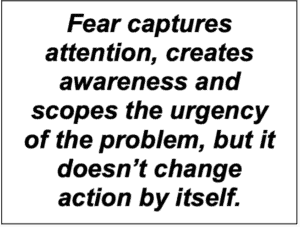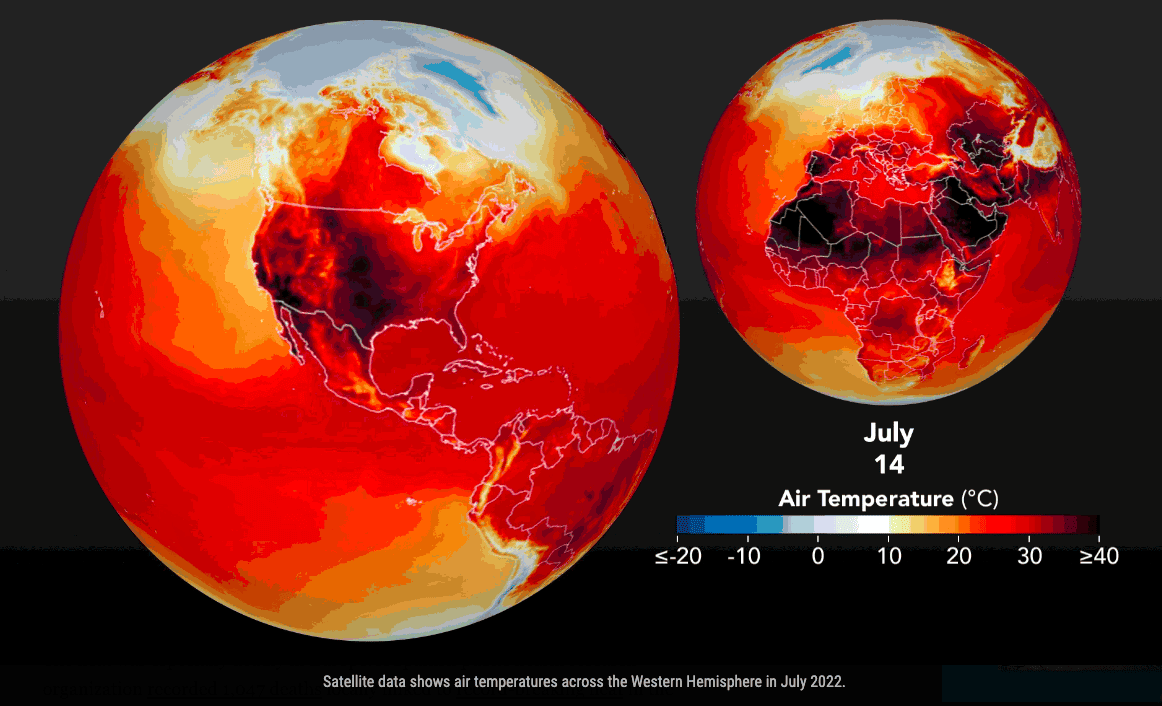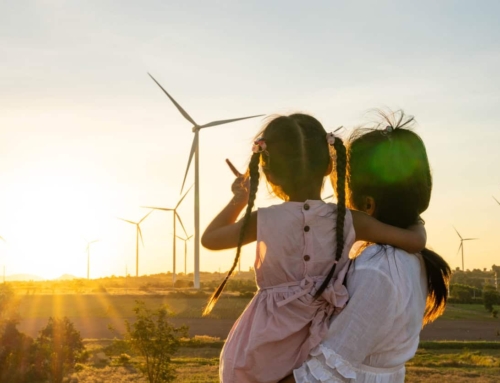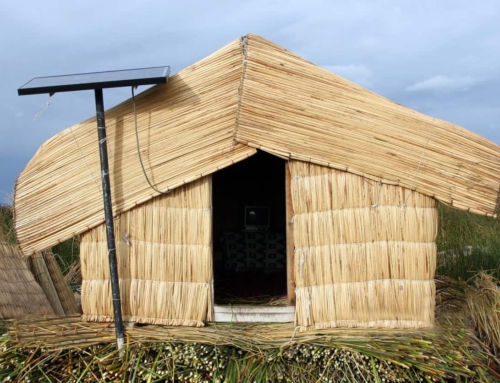… And What You Can Do About It!
Two wind turbines were walking across a field when one said to the other, “Say, what kinda music do you like?” The other wind turbine replied, “I’m a big metal fan….” In 2023, one third of energy generated in Minnesota came from renewables and over half is carbon free. Their governor just signed a bill to mandate 100% clean energy by 2040. You can be part of this revolution by <insert your own call-to-action.>
On the other hand, many of you have seen recent IPCC reports about the earth surpassing 1.5° centigrade (2.7° F) temperature increase. This is a tipping point likely to lead to millions of deaths through direct heat exhaustion and starvation from crop failure.
I’ve seen the latter posted all over social media, and shared over and over. But contrast these two paragraphs and ask yourself how you feel after reading each? Oh, I know you want to argue the details and facts. (Here’s a good one about how 1.5 is not a threshold.) But this isn’t about the details, it’s about the overall message. And our messages are often different than what we say.
What if our Facebook and other social media postings about climate change calamity were hurting our efforts rather than helping? Wouldn’t we want to change that? If so, how?
 As humans we have evolved to respond to fear in a fight, flight, or faint mode. Fear captures our attention and scopes the urgency of the problem. Otherwise we might get eaten by the saber-toothed tiger. The downside is that too much fear creates flight through fatigue, apathy, and disengagement. This is especially true when it appears we have no way to solve the problem and eliminate the fear, let’s say by grouping together to fight the tiger or climbing a tree.
As humans we have evolved to respond to fear in a fight, flight, or faint mode. Fear captures our attention and scopes the urgency of the problem. Otherwise we might get eaten by the saber-toothed tiger. The downside is that too much fear creates flight through fatigue, apathy, and disengagement. This is especially true when it appears we have no way to solve the problem and eliminate the fear, let’s say by grouping together to fight the tiger or climbing a tree.
In a click-based economy, where clicks mean revenue, or support, or popularity, fear get’s clicks. A little fear is OK. But, I see way too many posts by well-intentioned climate activists telling me that I am going to die. The mistake behind these posts is the belief that fear will trigger our logic and reasoning, then result in a sense of urgency, and finally action. Of course we need to be aware of the problem(s), but problems by themselves are insufficient to create action and so are facts and logic. (Just tell your friend that they need to lose 20 pounds for their health.)
Compounding excessive fear is the lack of any solution to the problem or action in a post that one can take. The result is we keep scrolling. We just can’t absorb the magnitude, nor does it seem we can do anything about the problem.
The first message above says we’re in this together and can solve our energy/climate problems. The second says, we’re pretty much screwed. No one wants the bleak future of the second message so they keep scrolling.
I’m taking a risk here by being categorical above. There are no absolutes in climate communications. But here are a few questions to ask before we post that might help engage others.
- What is the real purpose of our post?
Posts fall into a number of categories: a) Informational/Educational, b) Announcements/Events, c) Direct Calls-to-Action, and my favorite, d) Complaints and Opinions. The last of these, and the worst, is the post that seems to say, “See, I told you so. This is your fault. But I am absolved because I’m the one pointing out the catastrophe, so don’t blame me when your children explode like potatoes in the microwave.” (Ahh, we all have anger issues.) So is the post about us more than the problem? - Can we attract rather than persuade?
Attraction is always better than persuasion. Attraction is when someone sees a better version of themselves or their world by being involved. Sometimes we can do this by asking the right question and listening. Sometimes it’s using humor to point out a truth that is painful. Sometimes it is offering social proof, such as “thousands are applauding the Minnesota clean energy bill.” Or it is celebrating success or elevating our heroes and creating a sense of identity that people can aspire to. Or even marching together in the streets. - Do we have a solution and a call to action?
What do we want the person to do as a result of seeing our post? Solve global warming or work on an achievable local project? People like to engage in problem solving when you invite them, and they can see a path to success… the result of taking action. They want a reward for getting engaged. Can we provide that?
None of this is to say that we need to be Pollyannish. Climate is the the single most serious issue we face. Nor does it mean we never post on new climate information. It’s a matter of balance. But we do need to lighten up a little, breathe, and have some fun. Or we will be cast as the joke that asks, “How do you know if you’re talking to a climate activist? Oh… they’ll tell you!”
The tragedy of some posts about climate collapse on social media isn’t that our future may be bleak, it’s that our posts may cause people to disengage by ramping up fear and failing to offer ways to work on the problem. It will take millions of us working on tens of thousands of different issues over time to stabilize our climate. But we will involve or repeal those people one conversation and one post at a time.
Thanks for all you do.
We are all connected. Savor the Earth!’™
Hobie,
L. Hobart Stocking
SkyWaterEarth.com
hobart@skywaterearth.com
651-357-0110
Facebook: @SkyWaterEarthConnected
Twitter: @SkyWaterEarth








Leave A Comment